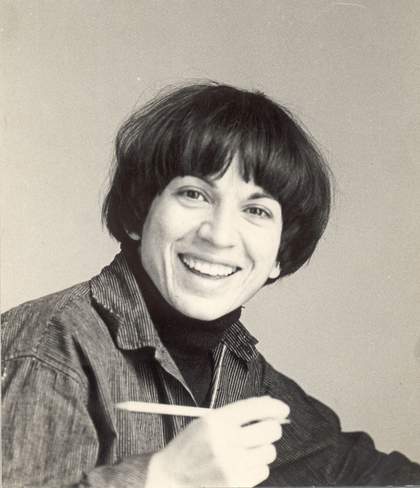Born 1942 in Amposta, Spain. Lives and works in Barcelona.

Mari Chordà, c.1976
Photo: Toni Aponte
Mari Chordà was one of the most eclectic personalities of the Spanish feminist movement, actively participating as an artist, poet, editor, screenwriter and co-founder of the legendary feminist bar/library/publishing house laSal, created in Barcelona in 1976. During her studies at the Escola Superior de Bellas Artes in Barcelona, Chordà began to experiment with pictorial representations of female sexuality. Despite having received a Catholic traditionalist education she sought to explore and expand tabooed conceptions of femininity by unveiling the body, treating it as a landscape and generating new references to signify femininity.
Mari Chordà’s The Great Vagina 1966, represents the culmination of an artistic process that investigated the visual representation of femininity from a physiological perspective. From 1964 she began to explore ways to counter the inherent voyeurism of many North American pop art works that represented women in the unrealistic, idealised fashion allowed by mass culture. In the 1960s Chordà began painting female genitalia in what she defined as a ‘non-figurative’ language: an aesthetic in between abstraction and close-up photography. Chordà’s investigation is further developed in Coitus Pop 1968, a work that depicts the sexual act with the same ‘non-figurative’ approach. By sacrificing the alibi of a commercial aesthetic, yet maintaining its bright and appealing palette, the depiction of a vagina and a phallus in Coitus Pop addresses the explicit eroticism at the base of consumption – one intrinsically connected to sexuality and desire (also evident in the title). By treating the body as a landscape, Chordà strips it of any subjectivity or sentimentality, once again forcefully problematising the issues behind the stereotypical representation of women.
Sofia Gotti
September 2015
